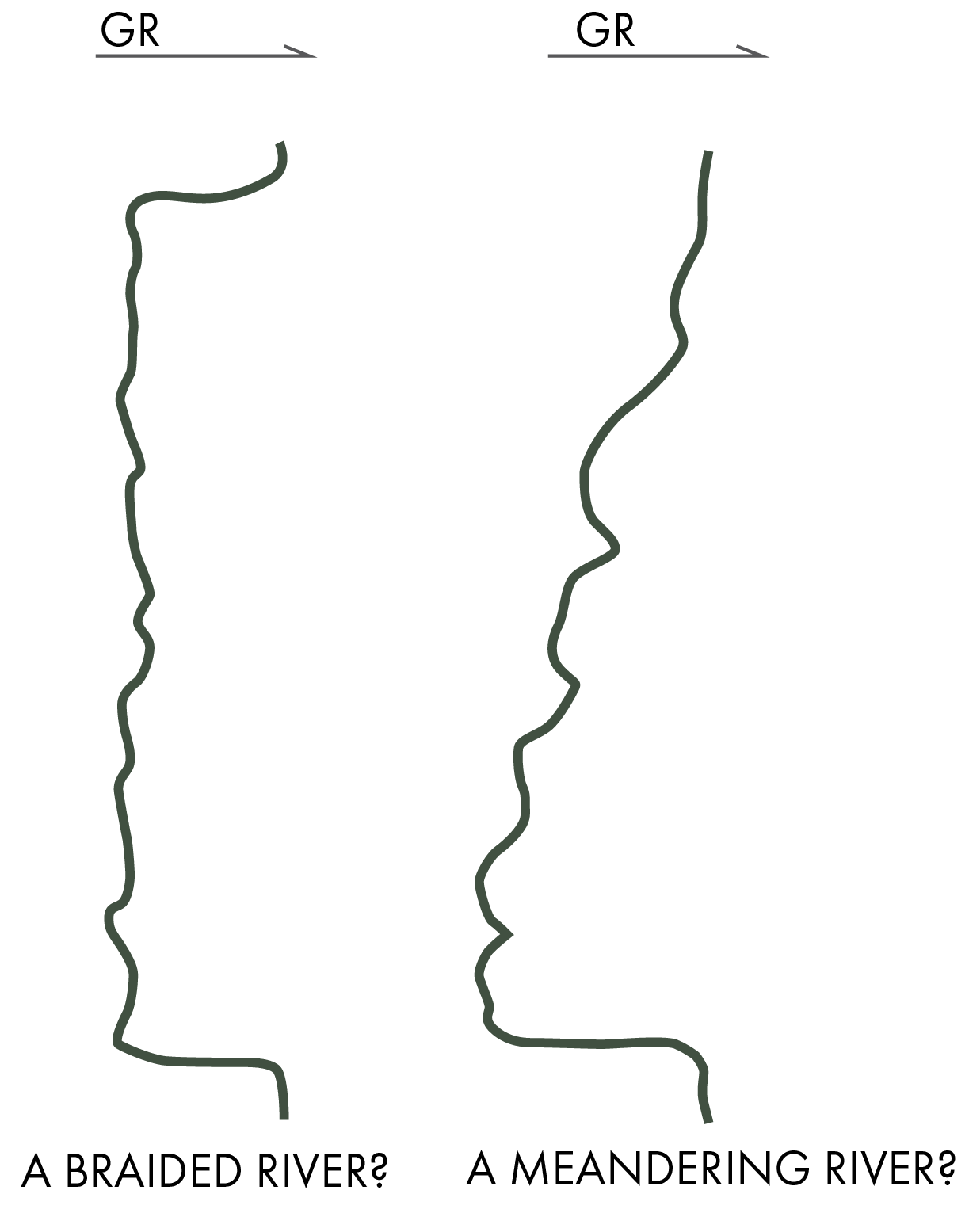For most people working in subsurface teams, discussions related to the interpretation of depositional facies on the basis of well logs are part of the daily routine. The more geologists in the room, the more ideas and interpretations. We decided to add some spice to these discussions and ran three polls on LinkedIn and Twitter. Each poll asked a simple question related to an important depositional environment; fluvial, carbonates and deep water.
Today, we discuss the poll related to fluvial depositional environments. This is part 2 of the cover story that has now also appeared in Issue 2 of the magazine.

Out of the three questions we polled, the one on the distinction between braided and meandering river deposits resulted in the most engagement and the highest degree of “division”. Out of the 98 people who voted, 47 are of the opinion that it is possible to make a call on river patterns based on a gamma-ray response, while an ever so slight majority of 51 think the other way.
In a comment on the poll on LinkedIn, Adam Goss from CNOOC responded in a way that is probably a good representation of how the “yes” voters approach the question. He writes: “If I a priori knew that the succession was 100 % fluvial and there was a blocky sand with no fining upward, I would call that a high-discharge braided fluvial deposit. However, I would look to justify my interpretation with other evidence of braided fluvial deposits and lack of evidence supporting a meandering river.”

Not everybody agreed with Adam though. Consultant sedimentologist Jon Noad says on Twitter: “Some meandering river deposits have a thick package of trough cross-bedded sands at the base, giving a thick, blocky signature in an overall meandering setting. The overlying point bar deposits may be sand dominated, also giving a blocky signature.”
Point bars and mid-channel bars cannot be distinguished. Likewise, sandy systems with little mud will be blocky, regardless of geometry – Anton Wroblewski
Anton Wroblewski from Applied Stratigraphix is the most prominent advocate against determining channel geometries from log profiles. In a LinkedIn comment, he said: “Point bars and mid-channel bars cannot be distinguished. Likewise, sandy systems with little mud will be blocky, regardless of geometry. Also, braided bars can be heterolithic in a wide variety of situations. People forget that gamma-ray logs record composition and not grain size. If there is clay and organic material in the channel scour (rip-up clasts or fluid mud), it will appear “fine” to uncritical interpreters. I’ve seen this happen in wells that could be ground-truthed with core.”
Does it matter?
“More importantly”, said Anton Wroblewski, “it’s worth asking: does it matter if the system was braided or meandering? Both can leave a sand-rich belt as bars amalgamate and stack. In some situations, it matters, in others, it probably does not. Also, streams evolve from braided to meandering over the course of their lifetimes, so the emphasis placed on identifying their patterns in the subsurface is probably better spent addressing other, more important aspects of the channel belt deposits. At least, that’s been my experience over the years.”
Where it matters
By Anton Wroblewski, Applied Stratigraphix
The Cretaceous McMurray Formation in Alberta, Canada, represents a large fluvial system the same size and general morphology as the modern Mississippi River. The reservoir bodies are fluvial and estuarine point bars 5-10 km long (across channel), 1-5 km wide (parallel to channel), and up to 55 m thick that display predictable facies distributions such as increased volume of fine-grained deposits on the downstream side and coarser-grained material on the upstream side.
The bars are heterolithic, with very fine to fine-grained sand constituting the reservoir facies and forming lateral accretion sets that are interlaminated with clay, claystone breccia, and organic-rich shale beds, which form baffles and barriers to fluid flow.
Upstream parts of bars also tend to have more interrupted flow barriers because erosion and redeposition increased the occurrence of sand-on-sand bed contacts. The downstream parts are more heterolithic and potentially more compartmentalised.
The bitumen itself is extremely viscous – about the same consistency as peanut butter – so it does not flow unless it is heated up with steam from horizontally-directed wells. These wells are paired with producers and use steam-assisted gravity drainage (SAGD) to produce the mobilised oil.
The heterogeneity of the meander bars is critical to planning the design for the steam chamber because the orientation, size, and facies distribution within the individual bars have a major impact on chamber size, reach, rate of growth, and bitumen recovery volumes.
In terms of fluvial reservoirs, the McMurray is unique because of its size, abundance of fine-grained material and viscosity of the bitumen. In fluvial systems where the reservoir facies were coarser, the mudstone beds and breccias less common, or the hydrocarbon less viscous, there would not be a need to so meticulously map out individual bars and potential steam chambers.
I don’t think meandering versus braided counts for anything unless it’s a system that has lots of very heterolithic bars that affected diagenesis or reservoir distribution and/or viscous fluid like the McMurray.

